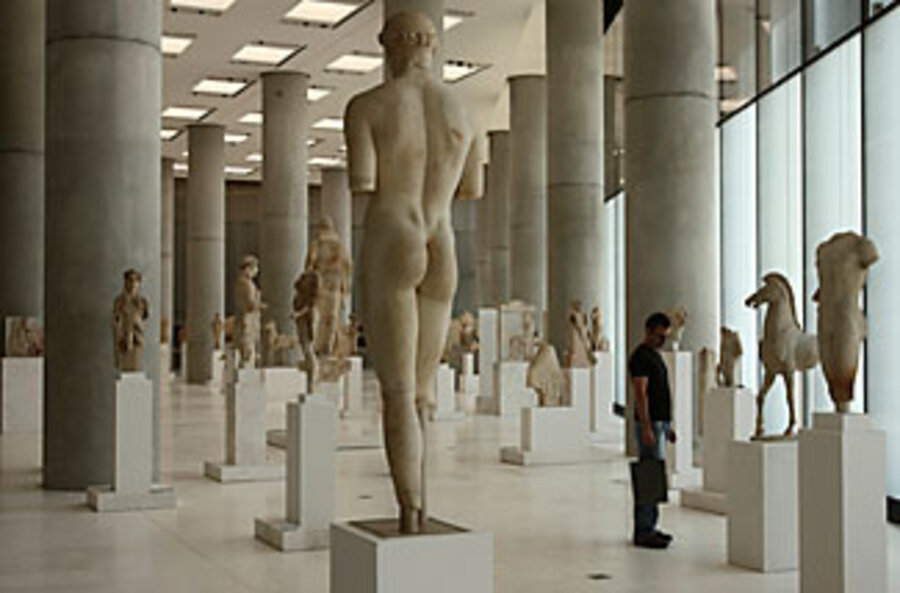Showcased at Greece's new Acropolis Museum: missing artifacts
Loading...
| Athens, Greece
Greece officially opened its long-awaited new Acropolis Museum Saturday, unveiling a spectacular new gallery to display the famous Parthenon Marbles.
But the new museum, more than 30 years in the making, will be defined as much by what it is missing as what it has on display: Nearly half the surviving sculptures from the Parthenon are exhibited in the British Museum.
The Greek government hopes the new museum will be a powerful tool in the campaign to win them back.
"Parthenon sculptures were looted. But this looting can be redeemed and repaired today," said Greece's Culture Minister Antonis Samaras, at a gala opening Saturday night. "The Acropolis Museum is a moral force that attracts the Parthenon Marbles back to where they belong. The marbles present are calling for the marbles missing."
Missing pieces put in spotlight
With the opening of the new museum, modern visitors can see for the first time the Parthenon Marbles laid out in succession as they were created, in sight of the famous building itself.
But for now, unnaturally white 19th century casts of the marbles held by the British Museum are interspersed with the pieces owned by Greece. The Parthenon Marbles, also known as the Elgin Marbles, were brought to Britain in the early 19th century by Thomas Bruce, the 7th Earl of Elgin, when Greece was part of the Ottoman Empire.
Although the museum's style is modern, Swiss-American architect Bernard Tschumi designed the museum with its contents, and specifically the marbles, in mind.
The museum is raised on concrete pillars over a classical and Byzantine-era archeological site. And the top-floor Parthenon gallery, made of black glass, is aligned with the Parthenon itself.
Marbles integral to Greek identity ...
Dimitrios Pandermalis, president of the Acropolis Museum, said the display highlights the damage that was done when Elgin removed pieces of the building's frieze and pediment. Some pieces are broken into bits, with parts in Athens and London.
Several other museums, in Germany and Italy, have already returned fragments of the Parthenon sculptures and a few pieces remain in other museums around the world. But the vast majority of surviving Parthenon sculptures outside of Greece are held by the British Museum.
Greek officials and supporters of returning the marbles to Athens question the legality of the marbles' original removal by Lord Elgin. But for many Greeks, the arguments for their return are as much emotional and historical as they are legal.
"The Parthenon is the symbol, the bedrock, of who we as Greeks are," says Alexis Mantheakis, a campaigner for the marbles' return. "I'm absolutely convinced that the position of the British government has become socially, historically, morally, and legally untenable."
... and to British Museum
But while the British Museum says it welcomes the opening of the new museum, its position remains unchanged. It says six million visitors a year see the marbles in London, free of charge, and in the context of other civilizations.
"Our case has always been that the Parthenon Marbles are an integral part of the museum's collection – to compare and contrast different cultures and human cultural achievement," says Katrina Whenham, a press officer at the museum.
The new Acropolis Museum is expected to host two million visitors a year and cost about $175 million. It has about 4,000 artifacts on display.





